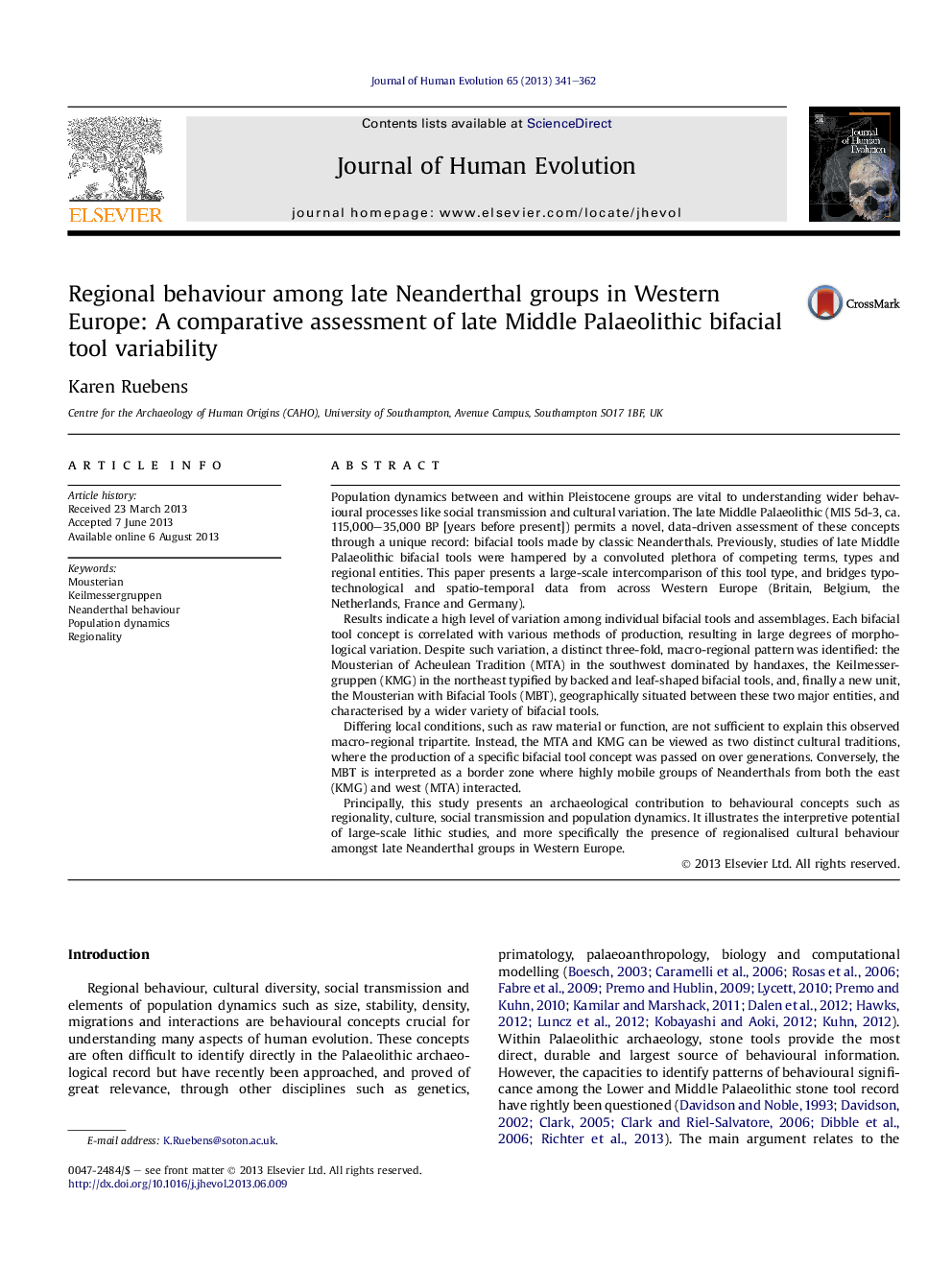| کد مقاله | کد نشریه | سال انتشار | مقاله انگلیسی | نسخه تمام متن |
|---|---|---|---|---|
| 4556145 | 1329456 | 2013 | 22 صفحه PDF | دانلود رایگان |

Population dynamics between and within Pleistocene groups are vital to understanding wider behavioural processes like social transmission and cultural variation. The late Middle Palaeolithic (MIS 5d-3, ca. 115,000–35,000 BP [years before present]) permits a novel, data-driven assessment of these concepts through a unique record: bifacial tools made by classic Neanderthals. Previously, studies of late Middle Palaeolithic bifacial tools were hampered by a convoluted plethora of competing terms, types and regional entities. This paper presents a large-scale intercomparison of this tool type, and bridges typo-technological and spatio-temporal data from across Western Europe (Britain, Belgium, the Netherlands, France and Germany).Results indicate a high level of variation among individual bifacial tools and assemblages. Each bifacial tool concept is correlated with various methods of production, resulting in large degrees of morphological variation. Despite such variation, a distinct three-fold, macro-regional pattern was identified: the Mousterian of Acheulean Tradition (MTA) in the southwest dominated by handaxes, the Keilmessergruppen (KMG) in the northeast typified by backed and leaf-shaped bifacial tools, and, finally a new unit, the Mousterian with Bifacial Tools (MBT), geographically situated between these two major entities, and characterised by a wider variety of bifacial tools.Differing local conditions, such as raw material or function, are not sufficient to explain this observed macro-regional tripartite. Instead, the MTA and KMG can be viewed as two distinct cultural traditions, where the production of a specific bifacial tool concept was passed on over generations. Conversely, the MBT is interpreted as a border zone where highly mobile groups of Neanderthals from both the east (KMG) and west (MTA) interacted.Principally, this study presents an archaeological contribution to behavioural concepts such as regionality, culture, social transmission and population dynamics. It illustrates the interpretive potential of large-scale lithic studies, and more specifically the presence of regionalised cultural behaviour amongst late Neanderthal groups in Western Europe.
Journal: Journal of Human Evolution - Volume 65, Issue 4, October 2013, Pages 341–362